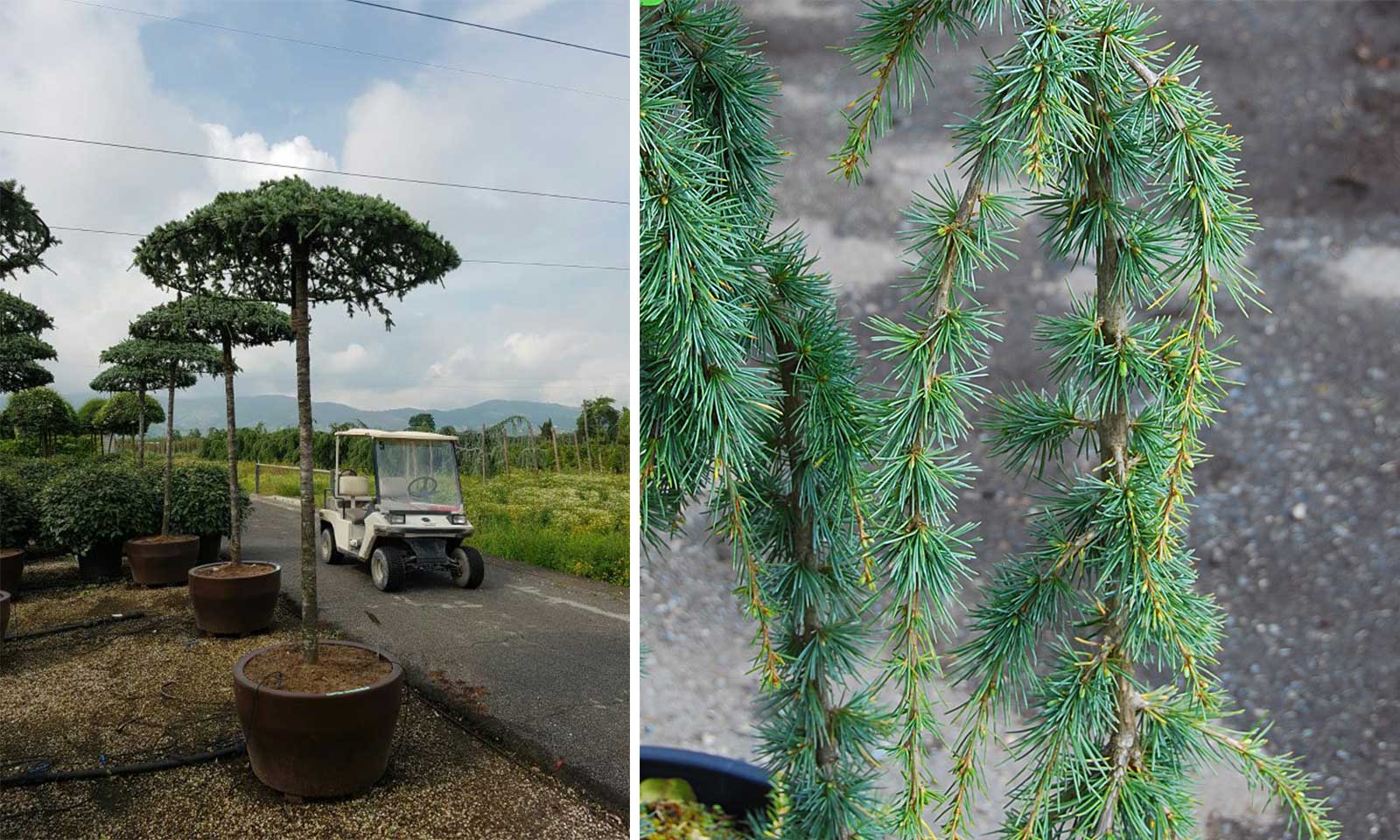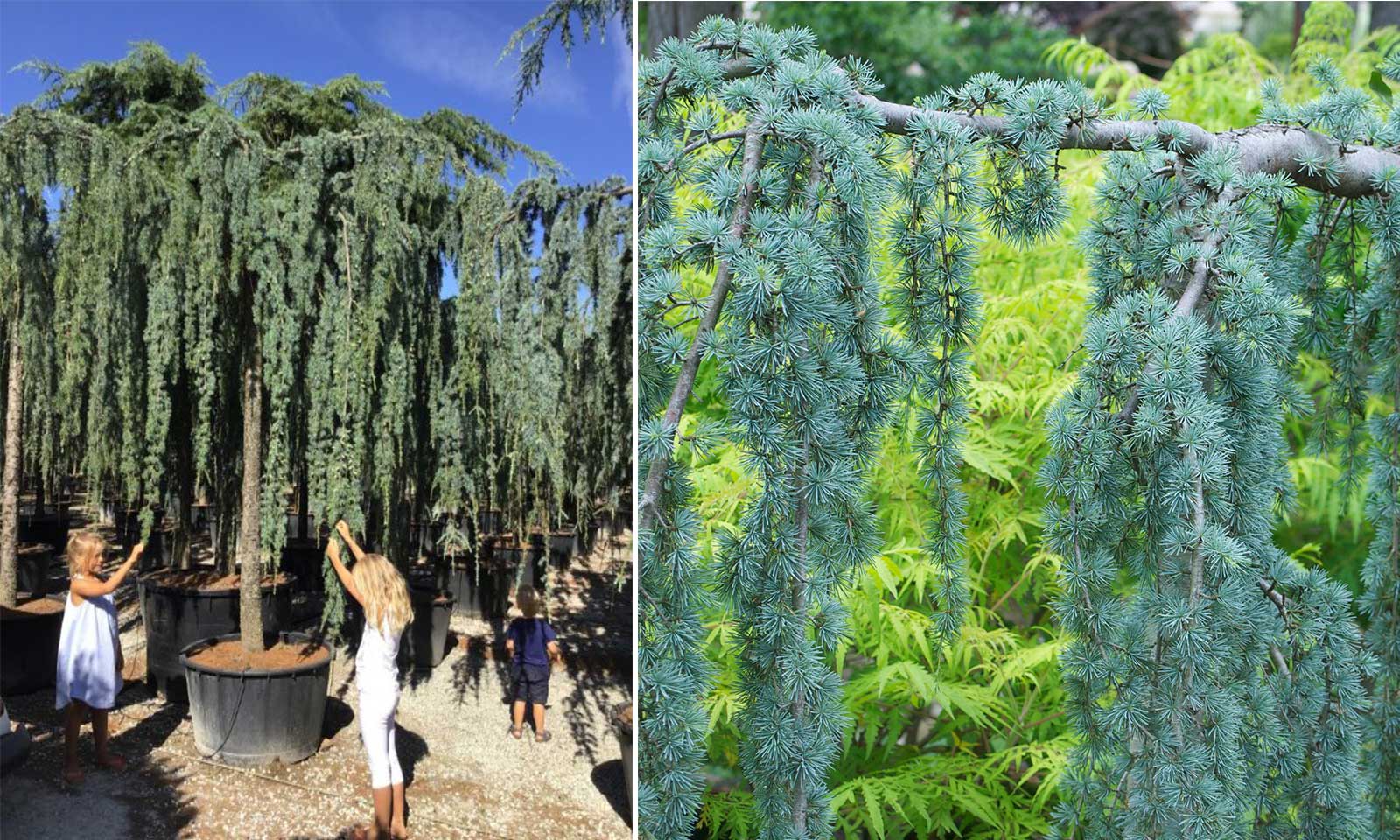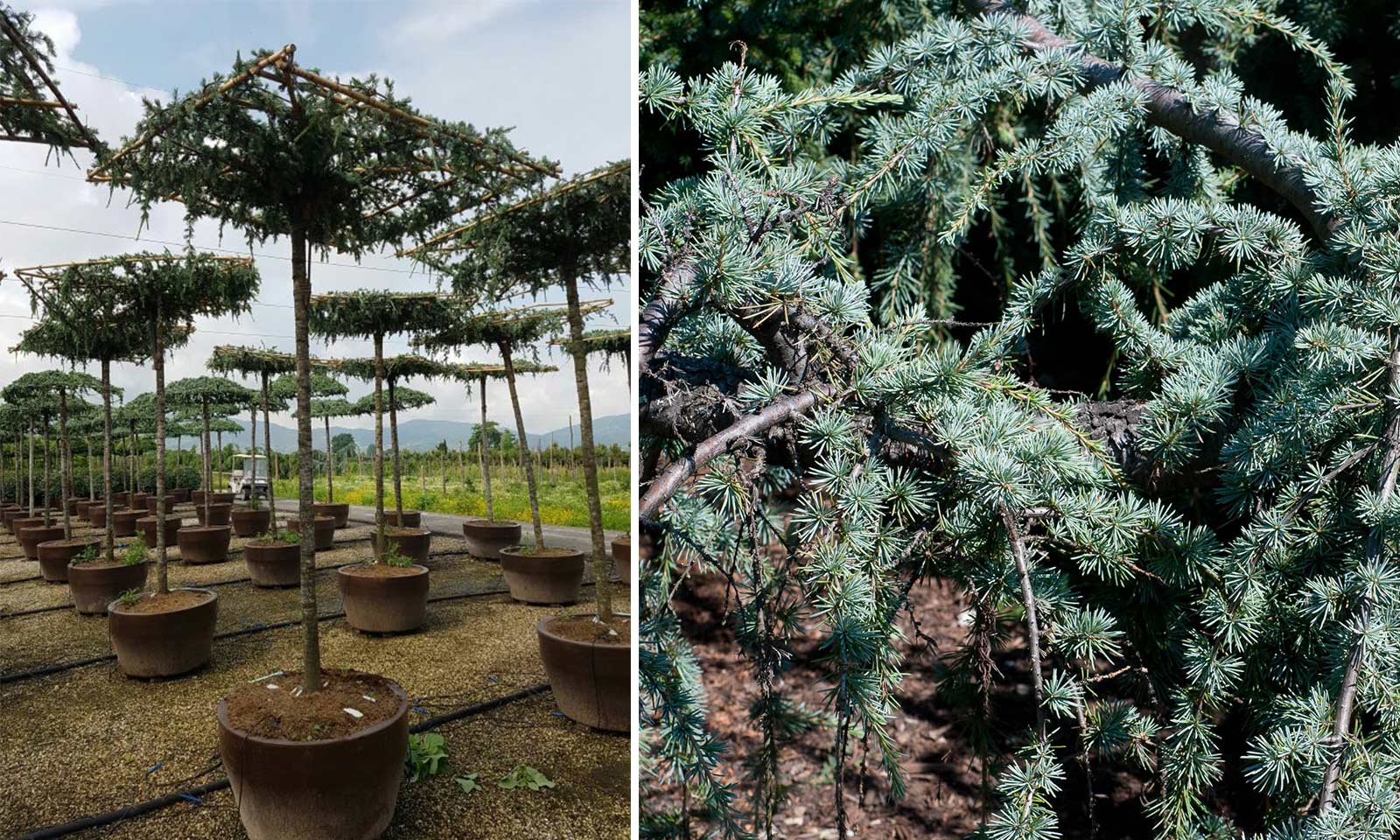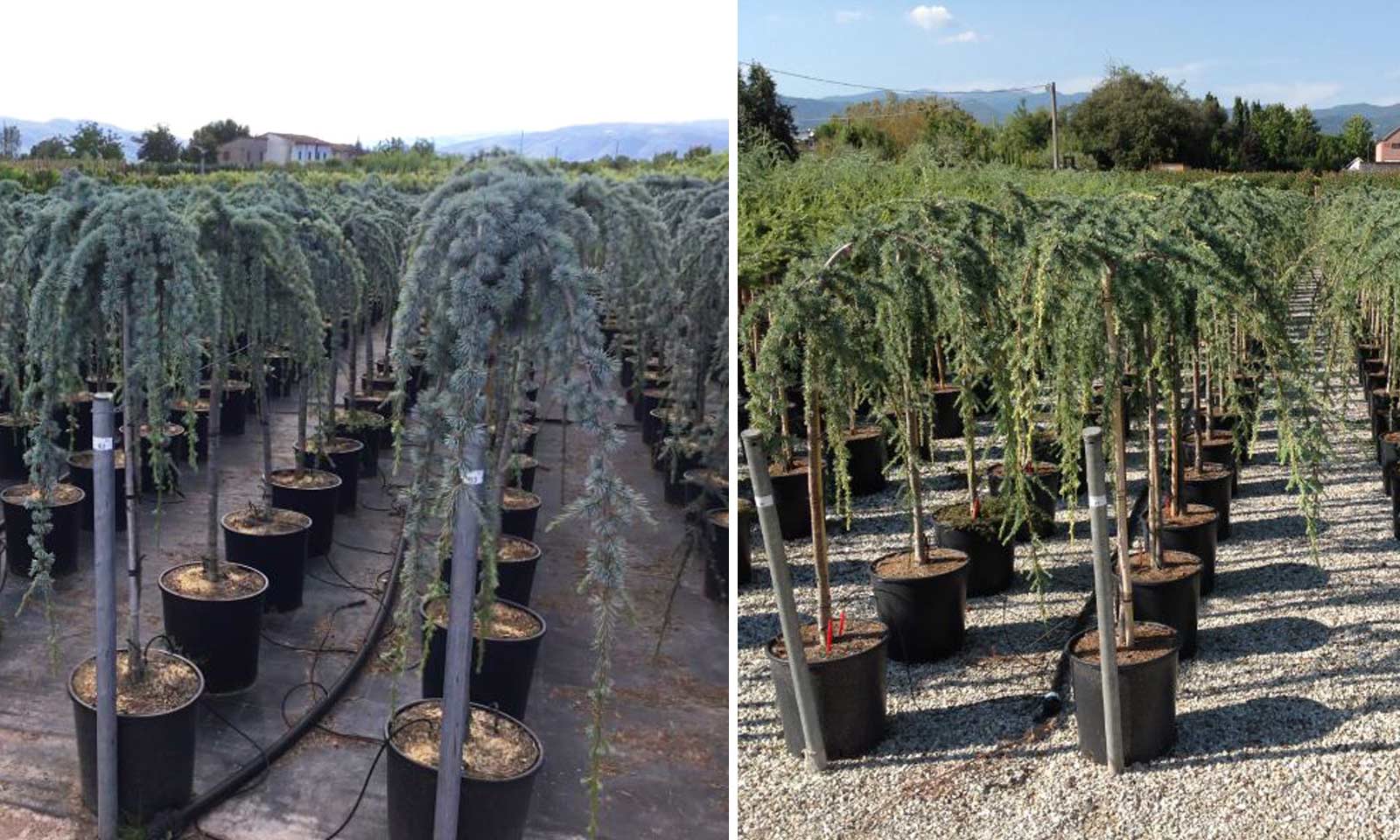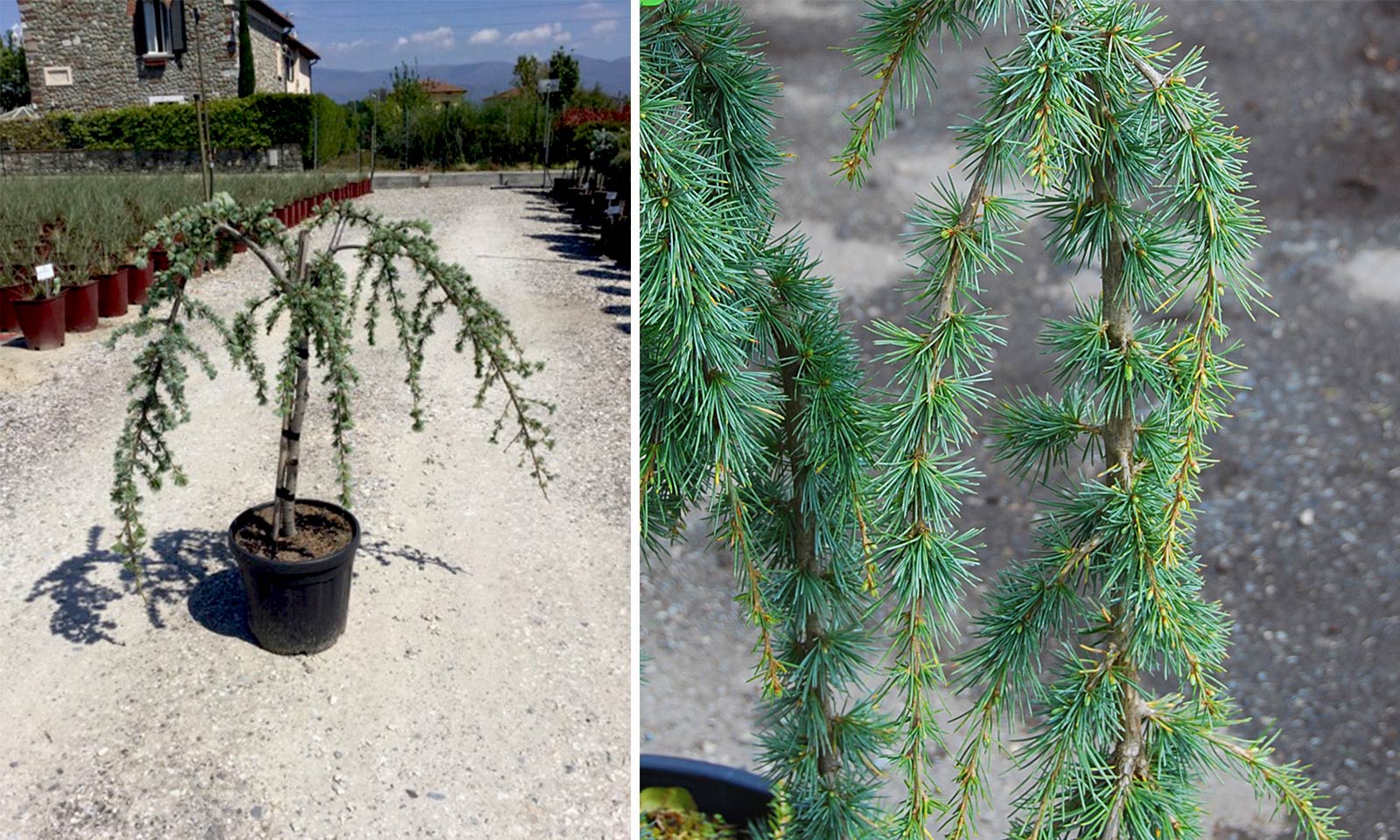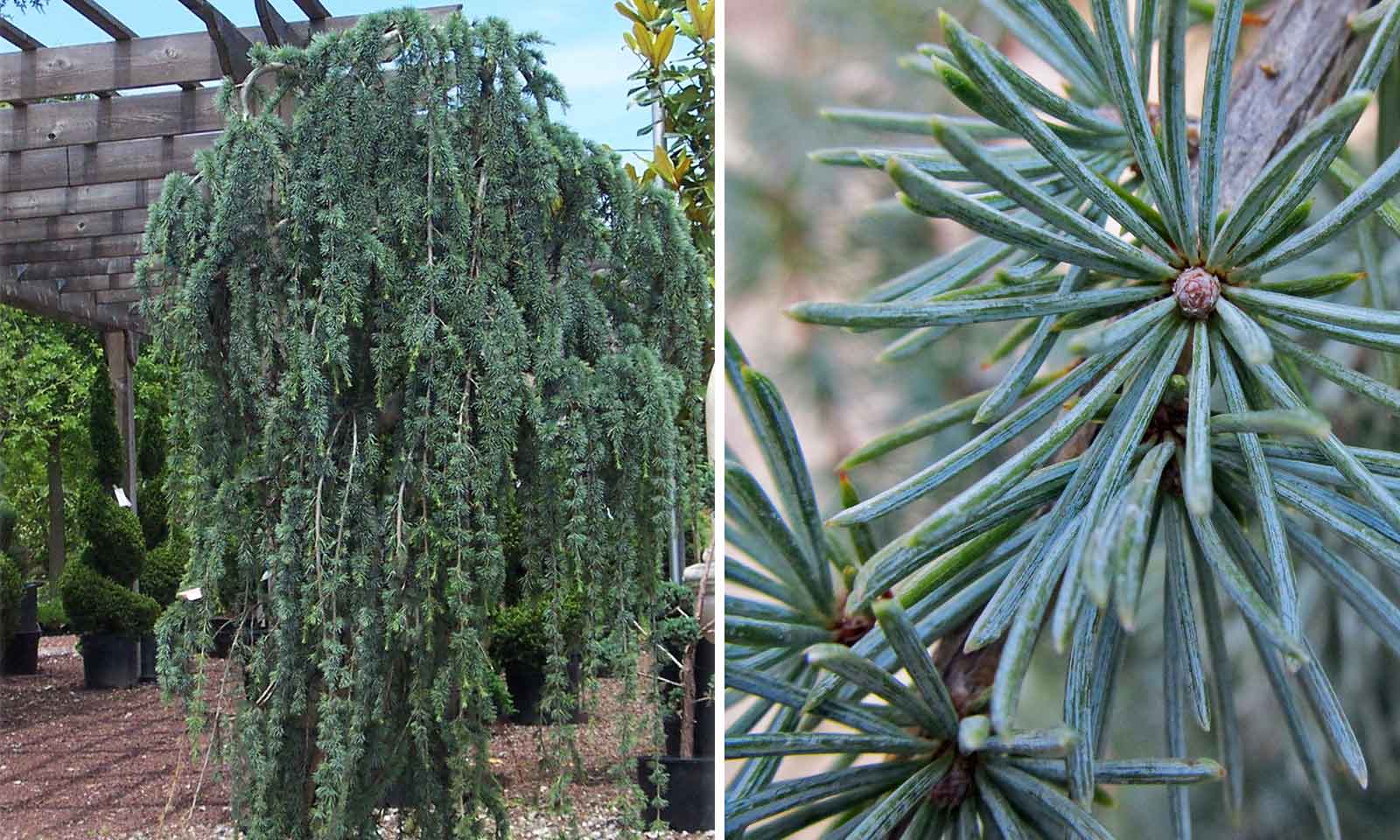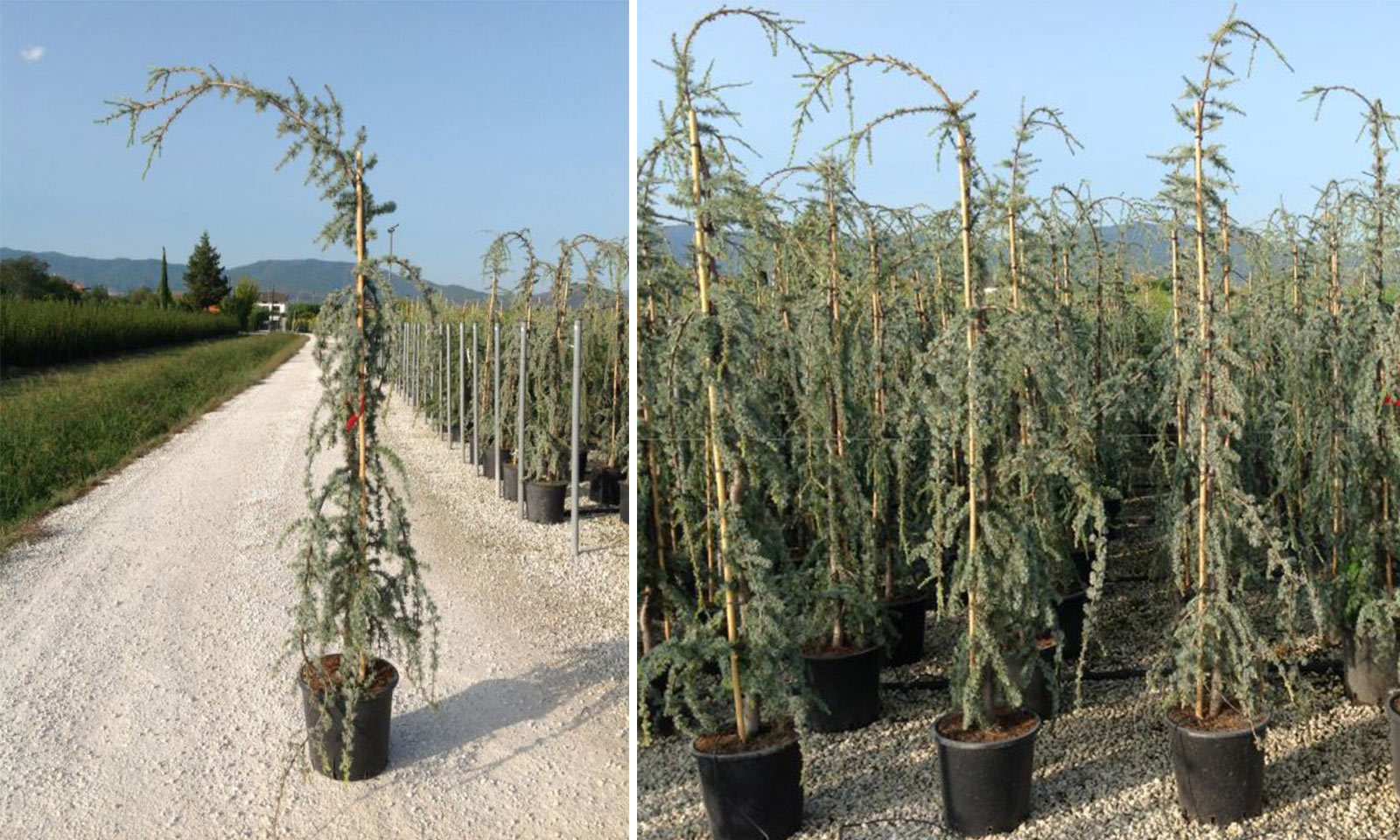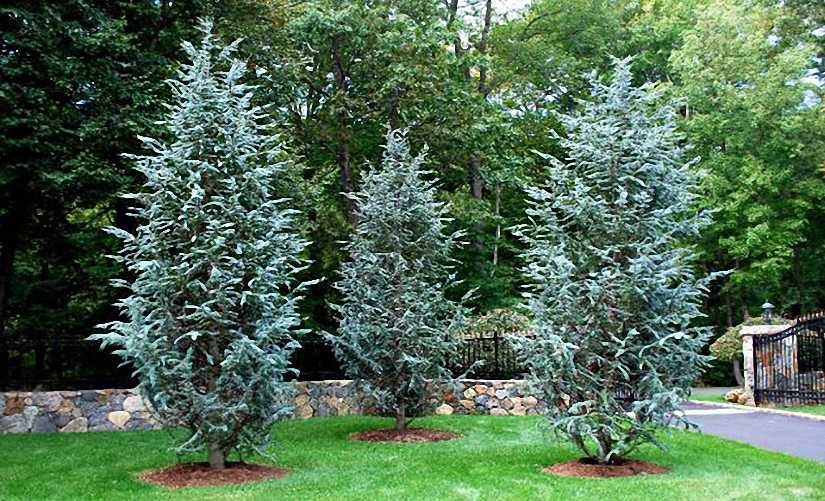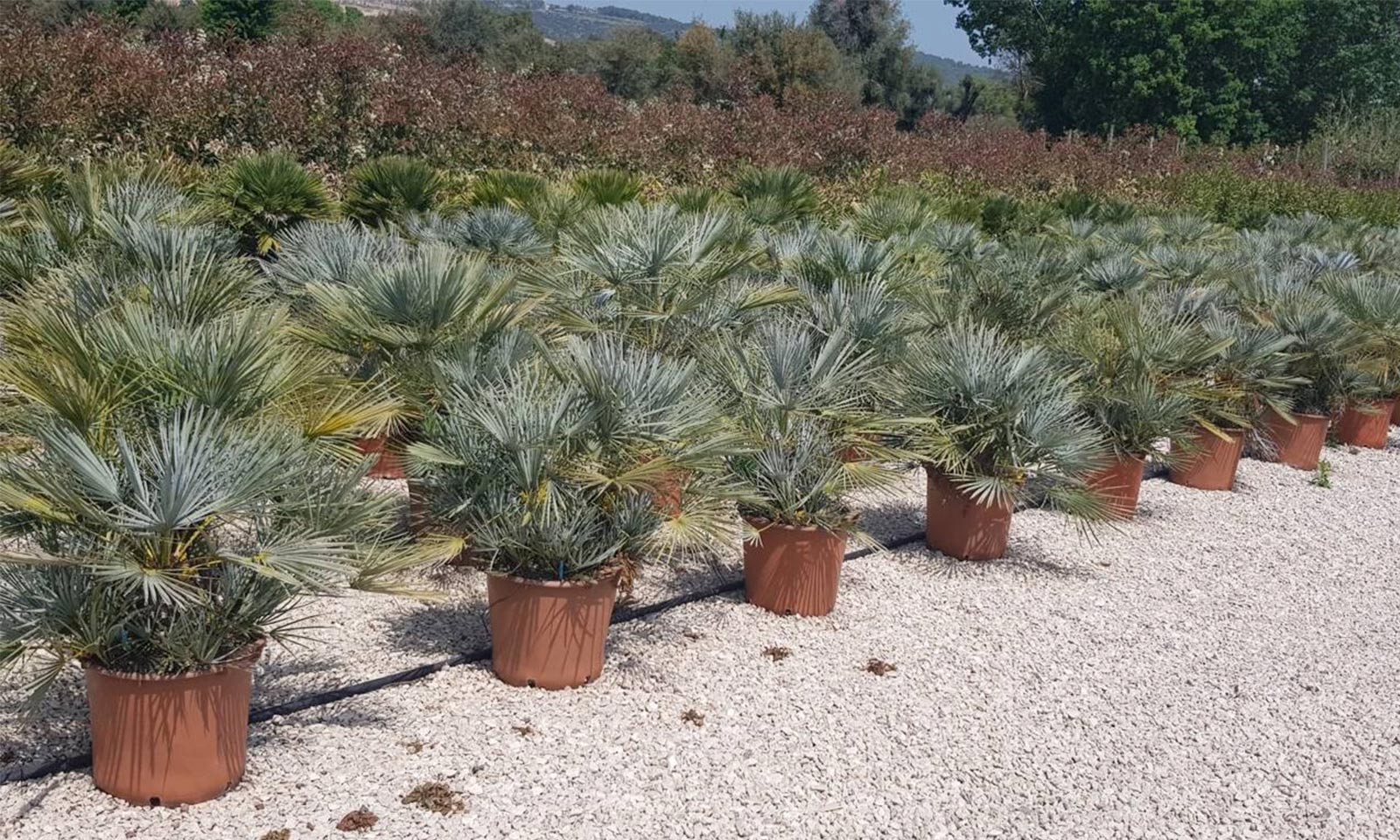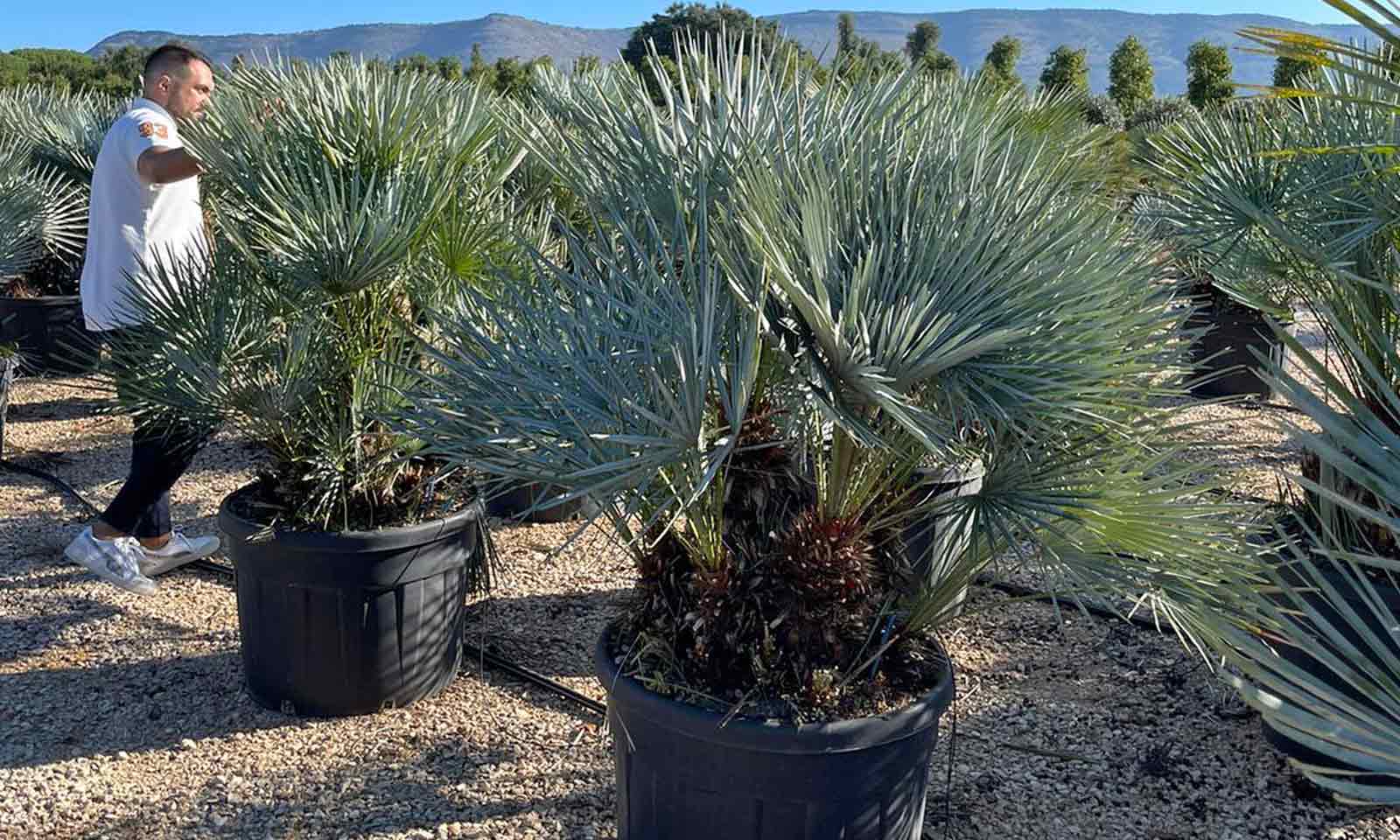Chamaerops Humilis Cerifera (Blue Mediterranean Fan Palm) - Multi-Stem - Extra
Native to the Atlas Mountains of Morocco growing at elevations of up to 1700m where it can get very cold in winter, it survives periods of extreme drought. One of the most cold tolerant palm species, able to withstand heavy frosts, it is rated at H4 and is very popular in Europe for a palm plant. Prefers full sun in a well-drained position, but seems to adapt well to shade and damp locations where the soil is not prone to waterlogging. It is an excellent palm to grow in a container where it can survive drought, heat, wind, cold and long periods of neglect. The plant itself is prone to potential pests and diseases. No pruning is required. The final height of the plant is between 1.5 m – 2.5 m (4.9 ft – 8.2 ft) and the final width is between 1.5 - 2 m (4.9 - 6.6 ft).
Product Dimensions
130-150 litre pot: height 125 - 150 cm (4.1 - 4.9 ft.), 2-3 stems close together in a pot
Latin Name: Chamaerops Humilis Cerifera
English Name: Blue Mediterranean Fan Palm, Morrocan Fan Palm, Blue Leaves
Species: Arecaceae
Genus: Chamaerops
Foliage Type: Evergreen
Foliage: Green
Flower: Yellow
Flowering Period: Spring – Summer
Suggested Location: Outdoor.
Suggested Soil Type: Well-drained. Loam
Suggested Exposure to Sunlight: Full Sun or Partial Shade
Suggested Exposure to Weather: Sheltered
Hardiness Rating: Medium (H4)
Lowest Temperature Tolerance: -15 °C to -10 °C (5 °F to 14 °F)
Growth Habit: Bushy
Pests: glasshouse red spider mite may be a problem under glass
Diseases: False smut may attack leaves
Cultivation: Grow under glass or as a houseplant in a loam-based compost in bright, indirect light. When in growth water moderately and feed with a balanced fertiliser once a month. Water sparingly in winter
Propagation: Propagate by seed or suckers
Pruning: No pruning required
Suggested planting locations and garden types: Architectural Patio & Container Plants City & Courtyard Gardens Coastal
Final Height: 1.5 m – 2.5 m (4.9 ft – 8.2 ft)
Final Sideways Spread: 1.5 - 2 m (4.9 - 6.6 ft)
Delivery Cost: This is calculated based on the total size, weight and quantity of your order, as well as the location of your delivery address. You will see the final price at the Online Checkout Page (before making payment). Our website will automatically calculate the lowest possible delivery price and apply discounts to orders of certain products – giving you the best value delivery every time!
Please note that high-volume orders will decrease your delivery costs significantly by spreading the price across multiple items. Visit our Delivery Policy page for more information.

